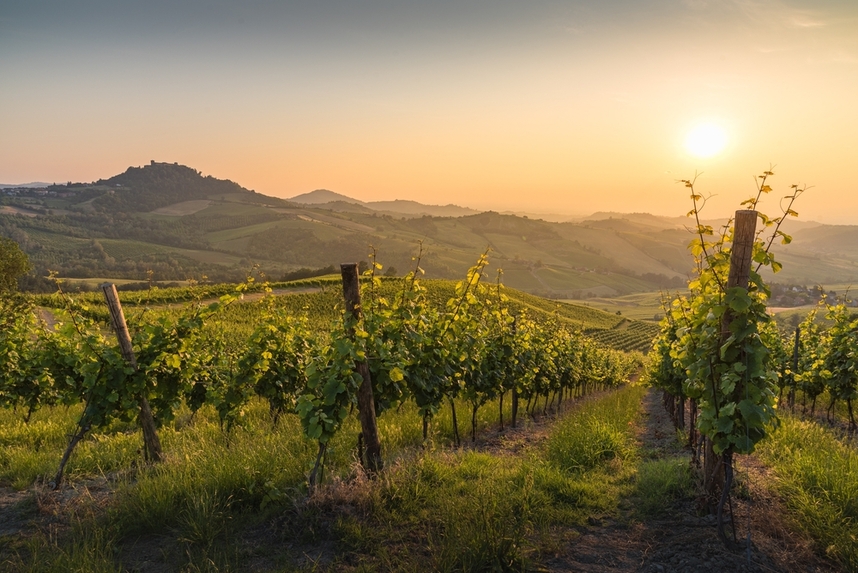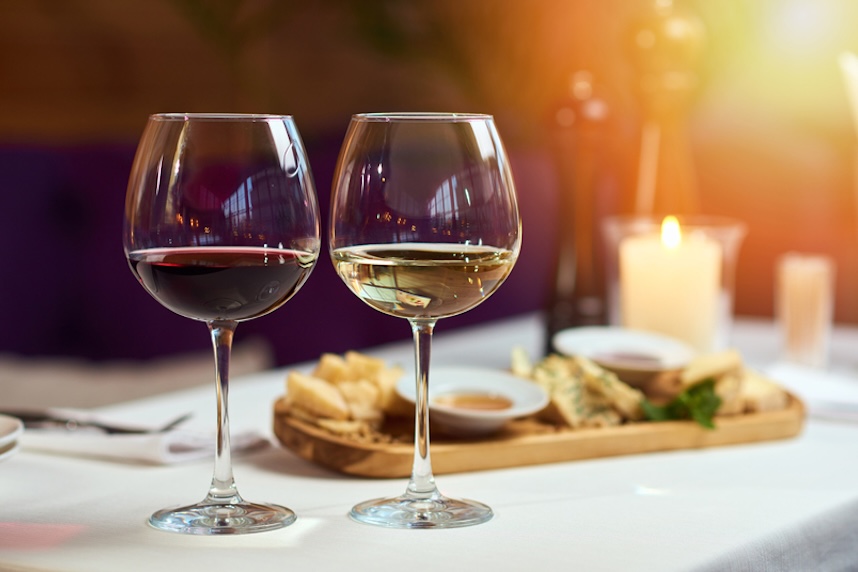It is in the geological and climatic variety of the region that the grape varieties of Lombardy have found a fertile context in which to flourish over the centuries, giving rise to the excellences that conquer the wine industry today. On the one hand cool Alpine areas, on the other vast plains and gentle hills, without underestimating the influence that Lakes Garda and Iseo have had and still have on regional wine production.
The red and white wines of Lombardy are an aromatic and gustatory masterpiece that reveals how active this region is in carrying the name of Italian oenology forward and upwards!
Lombardy, a land of great wines: history and production areas
Although the actual cultivation of vines is not attested in Lombardy before the 7th century B.C., the presence of vitis vinifera in the area dates back to the Bronze Age.
However, the credit for having developed a conscious wine production should be given to the Italic populations that settled in the region: the Raetians, Etruscans and Ligurians first, and then the Ancient Romans. Thanks to the latter, cultivation and wine-making techniques were consolidated, and production experienced a fortunate period, only to come to a halt during the Longobard invasion.
The history of wine in Lombardy continued with remarkable results from the Middle Ages - above all thanks to monastic activity - until the 19th century, when the spread of the most devastating vine diseases (phylloxera, downy mildew and powdery mildew) led to the beginning of a new crisis for the sector, which was overcome thanks to the development of innovative techniques and the birth of exceptional wine cellars.

To speak of a wine-growing region of Lombardy, therefore, means taking a journey over several millennia, as well as taking into account an extremely differentiated territory, which is divided into different wine-growing areas:
- Oltrepò Pavese: one of the most important wine-growing areas in the region, but also occupies parts of Emilia-Romagna, Liguria and Piedmont. In Lombardy, it is concentrated in the southern area of the province of Pavia.
Its geological profile is characterised by hills with a calcareous clay composition that, together with the temperate climate, favour the cultivation of vines (including Barbera, Bonarda, Croatina, Uva Rara, Pinot Nero, Riesling Italico, Moscato and Malvasia) and the production of the area's most representative wine, Bonarda dell'Oltrepò Pavese DOC.
- Franciacorta: this production area in the province of Brescia holds a very important record, namely the birth of the first Italian Metodo Classico sparkling wine. Here, mainly Chardonnay, Cabernet Sauvignon, Cabernet Franc, Pinot Noir and Pinot Blanc are cultivated on soils also rich in clay and limestone and thanks to a climate mitigated by the proximity of lakes
- Valtellina: located only partly in the geographical area of the same name, it has sandy soils that tend to be poor and a mountain climate that is not always easy. Despite this, the cultivation of the adaptable Nebbiolo has resulted in the prized Valtellina Superiore DOC and Sforzato di Valtellina. Other grape varieties used include Pignola, Brugnola and Rossola.
- Lake Garda: an area characterised by a microclimate of its own, with a Mediterranean climate, which guarantees the vines - predominantly Groppello, Marzemino, Barbera and Sangiovese - mild temperatures ideal for the creation of balanced, drinkable wines, such as the Garda DOC line-up.
Regional red wines and food pairings
A proactive and avant-garde region with regard to many sectors of industry, Lombardy also plays a leading role in the world of wine, thanks to a remarkable production of reds, both in terms of variety and yield quality.
Bonarda dell'Oltrepò Pavese DOC
Courageous and strong. This is the meaning of the Longobard term Bonarda, a wine that expresses its aromatic intensity right from the etymology of its name. The nose is in fact a symphony of fruity and floral tones - with a prevalence of cherry and morello cherry - while the taste reveals a good structure and a notable presence of tannins, which caress the palate with a sort of underlying roughness.
Not to be confused with the Piedmontese product made from the vine of the same name, Bonarda dell'Oltrepò Pavese DOC is made from Croatina grapes, which give this wine a ruby red colour with bewitching violet hues. Despite its powerful organoleptic charge, Bonarda is easy to drink and to pair with traditional Lombardy dishes. Try it with a board of local cured meats, with risottos, with boiled meats or with a dish of sausages with sauce!
Valtellina Superiore DOCG
Among the red wines of Lombardy, Valtellina Superiore DOCG is second to none, both in terms of quality and versatility.
Characterised by a ruby red colour with garnet hues, Valtellina Superiore has a persuasive aromatic profile, made even more special by the background spiciness and hints of roses. A harmonious structure and discreet tannicity are perceived on the palate.
Want to find the right way to offer it to your guests? Pair it with red meat or game dishes, platters of cured meats and mature cheeses, or serve it with a steaming pan of Pizzoccheri!
Gutturnio DOC
From the union of Barbera and Croatina, a fresh and lively wine is born in the Colli Piacentini area, with an intense ruby red colour, which may include purplish tones depending on the degree of ageing: Gutturnio. This product carries with it most of the characteristics of the red wines of Lombardy, such as the vinous and fruity aromas, as well as the rather accentuated tannin load.
It adds tone to the tasting experience with a special spicy aftertaste, which lends itself well to pairings with meat dishes such as boiled or braised meats. In its sparkling version, Gutturnio DOC is instead an excellent accompaniment for traditional first courses such as risottos, tortelli and polenta.
Dining with the great white wines of Lombardy
The wine tradition in Lombardy is not only composed of full-bodied, heady reds, but also of a large number of fine whites, which bring with them the unique characteristics of the terroir and the particularities of specific grape varieties.
Lugana DOC
Halfway between Lombardy and Veneto, a wine with an excellent aromatic charge is born: Lugana DOC. Vinified from Trebbiano di Lugana grapes in the area of Lake Garda, this product enchants palates thanks to its amiable character and good versatility in pairings. Its citrus scents, with hints of apple and pear (which in some versions blossom into something balsamic), make for fresh and pleasant tasting throughout the meal.
Lugana DOC can be enjoyed as an aperitif wine with local cured meats and cheeses, as well as fritti, rustici and bruschette, especially in the sparkling version. It also makes an excellent impression with first and second courses of fish, thanks to a hint of acidity and minerality that relieves the palate of the salty hints of these recipes. For lovers of earthy main courses, however, it is best to avoid red meats, preferring the more delicate white ones.
There is also a late harvest version that pairs beautifully with traditional Lombardy dry desserts, such as a tasty sbrisolona.
Riesling dell'Oltrepò Pavese DOC
Among the international grape varieties that have made a notable contribution to the wine tradition in Lombardy is the Riesling Italico, a French import, which gives rise to a light and easy-drinking Lombardy white: the Riesling dell'Oltrepò Pavese DOC.
Characterised by a straw-yellow colour with elegant greenish reflections, this Riesling well represents the terroir of Lombardy, captivating the nose with its floral aromas and refreshing citrus notes. The mineral hints - often found among the characteristics of white wines from Lombardy - are ideal with seafood hors d'oeuvres and fish dishes, even better if the flavours are not too complex.
Now that you are perfectly familiar with the red and white wines of Lombardy, rely on Giordano Wines to find the best labels for your next dinner party!
 Free Delivery from 69£
Free Delivery from 69£
